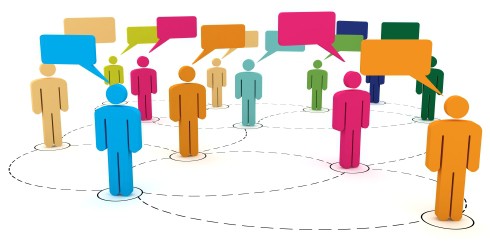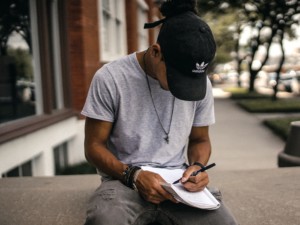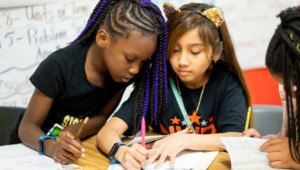Time’s Person of the Year: (It Should Be) The Crowd

The crowd in crowdsourcing is a completely disparate random group of individuals who can mobilize into a formidable force with viral speed. They come with broadband answers, voices, social causes, opinions, marketing influence, change and revolution. This crowd has crushed the old model of everything. Don’t confuse the crowd in crowdsourcing with “crowd thinking” or “mob mentality.” This crowd has independent thinkers who are united by modern technology. It’s a collective cloud consciousness that could never be totally achieved in the legacy crowds who were linked more by proximity than cause.
Who crowdsources the most? The Gen Z learners, naturally. Who crowdsources the least? Their Baby Boomer teachers, unfortunately. But that gap is closing, and both groups can stand to learn a lot from each other about crowdsourcing. The Internet did not invent crowdsourcing. The Internet just completely took it over, but its origins are old. Crowdsourcing dates back to at least the ancient Babylonians who crowdsourced their health care solutions. According to Herodotus, sick people were left in the middle of the town square, where people passing by (who may have had the illness themselves or knew someone else who had it) could give advice to the sick person. (Insert your own health care joke here.)
There’s a power in crowdsourcing that can be perplexing, especially by those of us who still marvel at things like probability outcomes. Take the example of crowd wisdom at a 1906 county fair in England where there was a contest to guess the weight of a prize ox. Whoever guessed the weight correctly first would win a cash prize. 800 contestants entered, but no one guessed correctly. Prize unclaimed. Afterwards, though, noted statistician Francis Galton analyzed the contestants’ guesses. He took the average of all 800 guesses . . . and guess what he found? Bingo. The exact weight of the ox. The crowd itself was . . . smarter? . . . more accurate? . . . luckier? . . . than the individuals in the group.
We’ve seen crowdsourcing help track the spread of wildfires, update rush-hour traffic alerts, search for crashed airplanes using Google maps, connect donors to relief workers on the ground, and even bring down proposed legislation that would have put tighter controls on the Internet. There’s a power there that classroom teachers and school leadership need to harness.
You might not think you’re part of this phenomenon, but if you’ve ever used Wikipedia, asked a question on social media, or used a hashtag, then you’ve either benefited from crowdsourcing or you have, in fact, been part of the crowd.
Crowdsourced solutions and answers can come from some random people, but getting an inkling of what a diverse population thinks and does can be intriguing. Why do people participate in crowdsource? They love to know someone is interested in their niche, in either the knowledge share or the production end. Need an answer? The crowd has it. Need a logo design? The crowd has skills. Need money? The crowd has financing. Need help with a cause? The crowd has compassion.
Crowdsourcing has had its greatest impact on funding, knowledge collection and curation, and creation and production. All of these are key issues for today’s educators, both at the leadership level and in the classroom. Gen Z students were born in the middle of this crowdsourcing phenomenon, except they don’t recognize it as a phenomenon. It is what it is, just part of their world. They crowdsource their favorite social media sites 24/7/365, asking questions, giving answers, and finding a connection to their favorite social missions.
Let’s dive a little deeper into these three key elements of crowdsourcing.
FUNDING
KickStarter: the world’s largest crowdsourced funding platform for creative projects.
Neighbor.ly: invest in civic projects that you care about.
DonorsChoose: online charity that makes it easy to help students in need through school donations.
Upstart: crowdfunding and mentorship program helps college graduates pursue their dreams before they get stuck in a 9-5 job that simply pays the bills.
KNOWLEDGE CREATION AND CURATION
Curriki: from “curriculum” and “wiki” comes curriki – community for teachers, students, and parents to create, share, and find free learning resources that enable true personalized learning.
SOS Classroom in Unified L.A.: When the school district could no longer fund its summer school program, students at the University of Southern Cal sprung into action and created the SOS (Save our School-school) website. Hundreds of crowdsourced volunteers populated the website with alternative summer school programs and free resource material.
“This Is Your Brain on the Internet” Course: A college course created by Duke University’s Cathy Davidson that has college students use crowdsourcing for teaching and grading.
Social Media Qs and As: millions of questions (literally and literally understated) are asked and answered (both rightly and wrongly) on Twitter, Facebook, Google+, LinkedIn, Foursquare, Yelp, and a wide variety of others each days. Students turn to social media for school help routinely.
CREATION AND PRODUCTION
Crowdsourced Choir: Ted Whitacre created an online choir through crowdsourcing. Check out his amazing Ted Talks feature.
99 Designs: crowdsource your design solutions.
Science Signs: started by the University of Washington in 2008, this site crowdsources members of the deaf and hard-of-hearing community to build their own database of signs for difficult and forever evolving science lexicon.
Fold.it: gamers crowdsource on their Xboxes to “fold proteins” in this data gathering mission. Stanford University researchers use a simple program that runs in the background of gaming systems. Gamers can let it run in the background or watch the live stats and form teams that compete against each other. The fold.it game is helping researchers unlock the mysteries behind diseases and is credited for advancing the treatments of HIV/AIDS, cancer, and Alzeihmer’s.
From the Fold.it website:
The number of different ways even a small protein can fold is astronomical because there are so many degrees of freedom. Figuring out which of the many, many possible structures is the best one is regarded as one of the hardest problems in biology today and current methods take a lot of money and time, even for computers. Foldit attempts to predict the structure of a protein by taking advantage of humans’ puzzle-solving intuitions and having people play competitively to fold the best proteins.
So how do we take all of that into the classroom? Stay tuned for “Crowdsourcing in Schools” on an upcoming blog. We will take a closer look at turning the classroom into a modern crowdsourcing machine by using some of the latest tech tools and best practices from around the nation.






Juan
I am excited to read the upcoming article crowdsourcing in schools. Being a young education executive, I find myself standing between the gap of the baby boomers and the generation Z. Yet as it poses more challenges, it gets more exciting to venture the unknown. Thanks to this article, I get to reflect what we can do next.